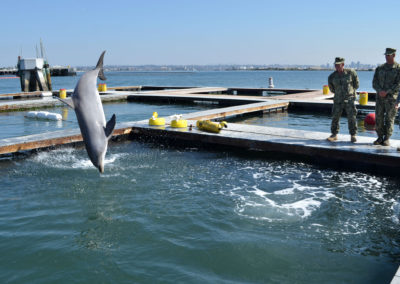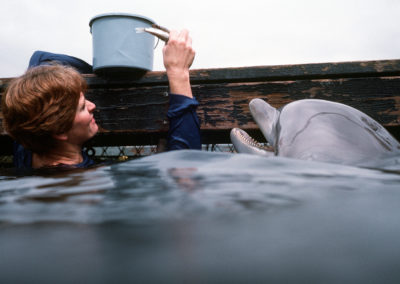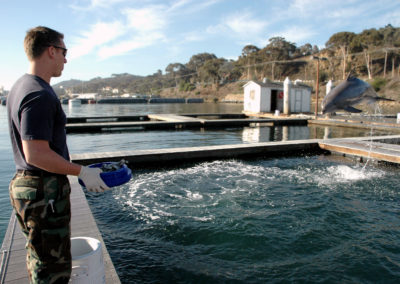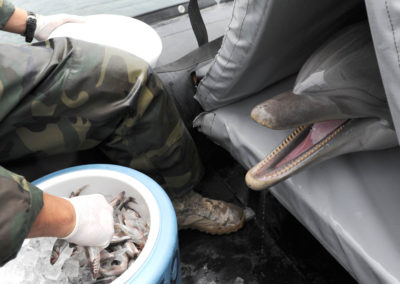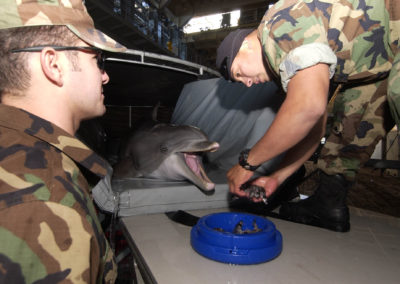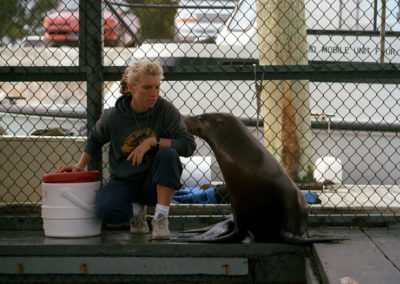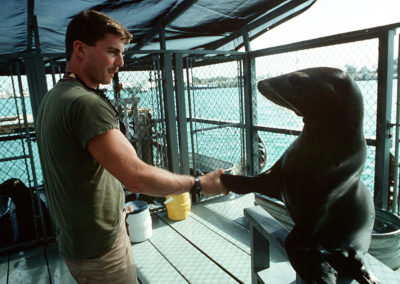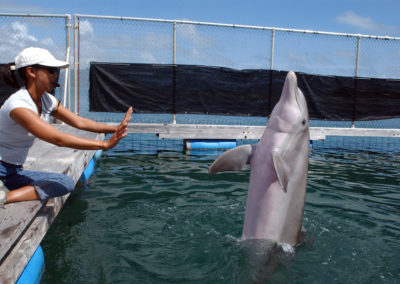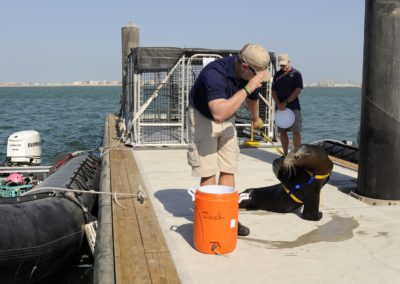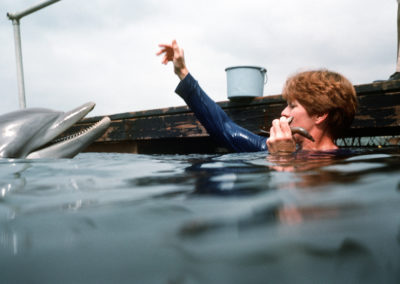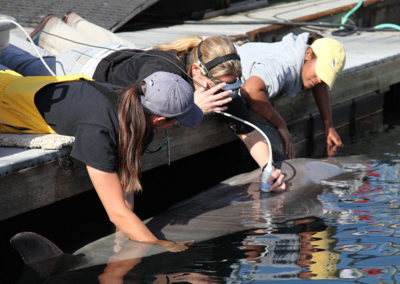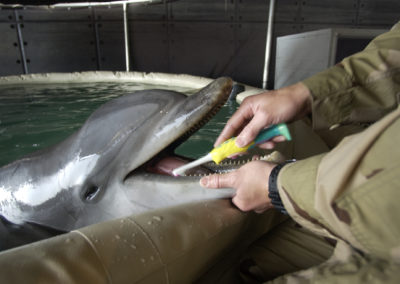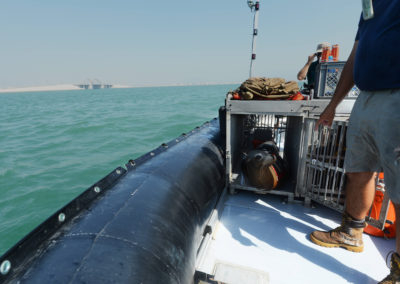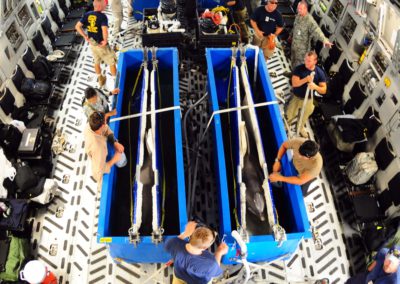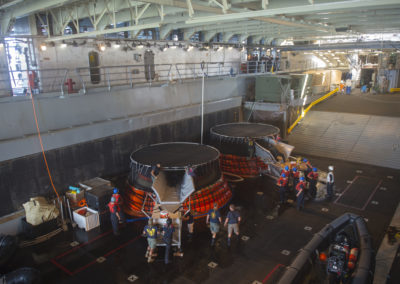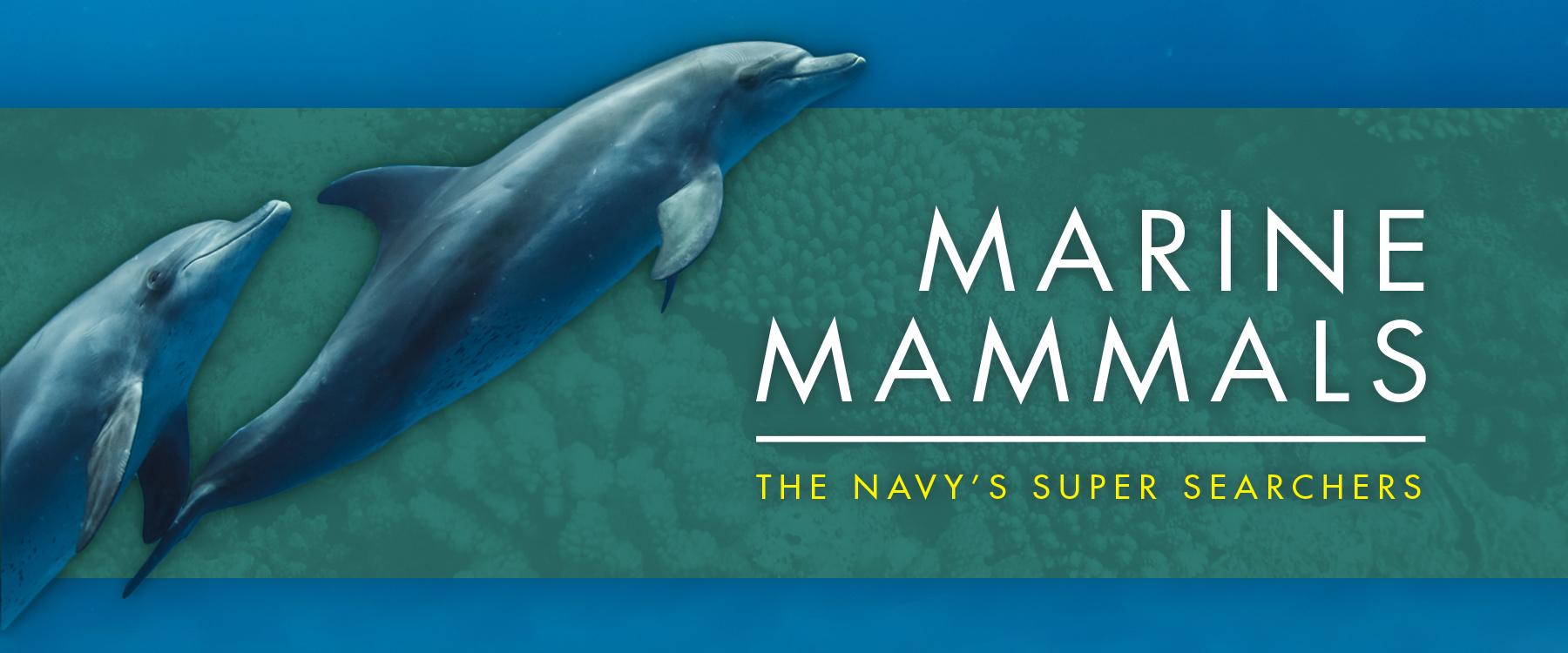
LIFE FOR NAVY DOLPHINS AND SEA LIONS
Dolphin and sea lions join the Marine Mammal Program in different ways. The Navy has bred dolphins exclusively since 1989. Sea lions are obtained from rescue organizations, marine parks, or the wild. Only male sea lions (neutered to reduce health issues, aggression, and size) take part in the program.
The Navy’s marine mammals live on a large Navy base in San Diego. What do they do when they are not on missions? Keep reading for a look at their day-to-day lives!
 Can the animals leave?
Can the animals leave?
Yes, Navy dolphins and sea lions work in open water almost every day. They can swim away if they choose, and over the years a few have. But almost all stay.
Wild ocean animals experience frequent danger and stress as they hunt for food and evade predators. The Marine Mammal Program gives Navy animals comfortable lives: guaranteed food, safety from predators, and social interaction with trainers and fellow animals.
Food
Yum, a tasty fish breakfast! Every day the Navy’s dolphins and sea lions eat 15–25 pounds of restaurant-grade fish like herring, mackerel, and squid. Staff inspect each fish individuallyby hand before they are fed to the animals. Sea lions are especially enthusiastic eaters and will devour any fish accidentally left nearby.
Socialization
Imagine living next door to your best friend and visiting him or her anytime you wanted. Navy dolphins and sea lions live in 30-foot by 30-foot enclosures with underwater gates. The social animals travel freely between enclosures to play and interact with each other.
Training
It’s time for a training session! Before embarking on missions, sea lions train for 2–5 years and dolphins train for 5–7 years. Trainers and animals build close attachments and deep trust.
Navy animals learn through positive reinforcement. Trainers reward desired behaviors with fish, petting, verbal praise, toys, and play. Incorrect behaviors are ignored.
Navy dolphins and sea lions train and learn throughout their lives. Practice is key to learning tasks and to performing them correctly and reliably.
Health Care
Training begins with an important ritual: a daily health check. Preventive health care is the cornerstone of the Marine Mammal Program. Trainers help monitor the animals’ health by checking their bodies and mouths for wounds or infections.
A team of veterinarians provides medical care to the animals 24 hours a day, 365 days a year. They administer regular blood tests, ultrasound scans, and physical exams to prevent or quickly detect health issues. Veterinarians and mobile clinics travel with animals on deployments.
Research
Imagine administering hearing tests to a person and to an animal. While the person can follow verbal instructions, training an animal to signal when it hears a tone can take months. The Navy’s marine mammals make excellent test subjects because they are readily trainable.
Navy dolphins and sea lions take part in research to help scientists better understand marine mammal health, physiology (how their bodies function), behavior, and sensory abilities like hearing and echolocation. Scientists and veterinarians with the Marine Mammal Program have published over 1,500 scientific papers on marine mammals, more than any other organization.
Travel
Ahead of a deployment, staff gather for pre-transport briefings to run through travel arrangements. With careful planning, animals travel safely all over the world.
Animals travel in specially-designed enclosures transported by trucks, cargo planes, or ships. Trainers accompany the animals and monitor their breathing, temperature, and activity levels throughout the trip. Veterinarians attend animals on trips longer than two hours. Staff keep the animals cool and comfortable during the journey.
Because they are amphibious, sea lions can travel comfortably out of water. They ride in steel kennels aboard all forms of transportation.
In aircraft and trucks, dolphins travel in fleece-lined stretchers suspended in boxy fiberglass containers. Water inside the transport container supports the weight of the dolphin. The stretcher holds the dolphin in place.
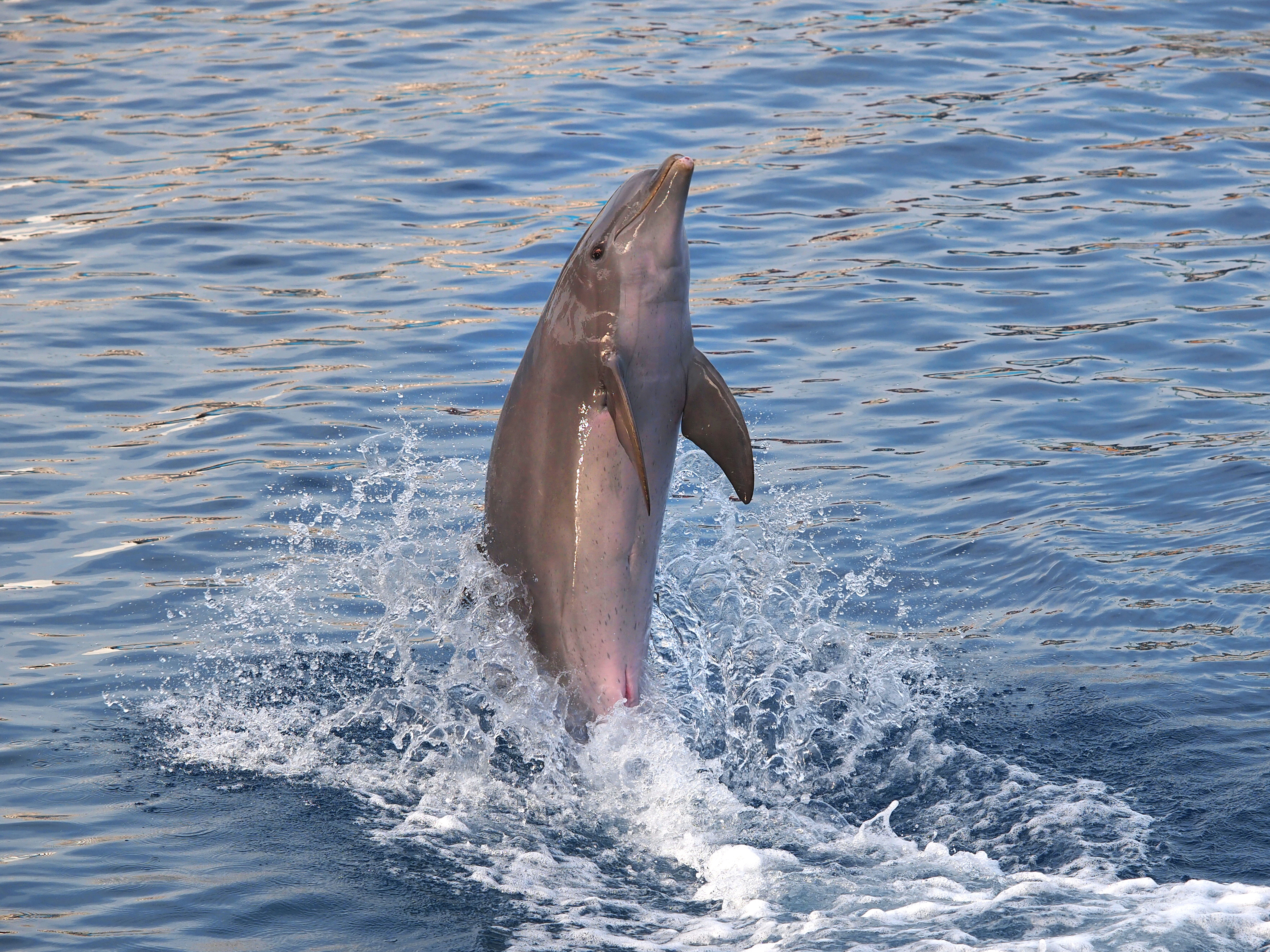 Marine Mammal Abilities Remain Unparalleled
Marine Mammal Abilities Remain Unparalleled
Navy dolphins and sea lions excel at finding mines and intruders underwater. Their exceptional acoustic, vision, and diving abilities outperform human divers and undersea vehicles.
For decades, Navy engineers have struggled to invent sonar technology that can match the detection skills of marine mammals. While they draw closer every year to that goal, dolphins and sea lions remain unequaled in their ability to detect objects and enemy divers.

